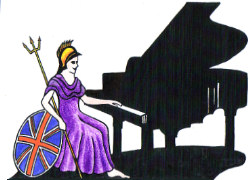Teachers, Accompanists and Piano Entertainers in the UK

UK Piano Page

Browse Locations England » Nottinghamshire » Sherwood
10 Poplar Avenue,
Sherwood, Nottinghamshire NG5 1DJ
England
All of our staff are trained in the art of careful, safe piano moving to ensure your piano is moved from one location to another and then placed in ...
The Estate Yard
Eridge
Royal Tunbridge Wells, Kent TN3 9JR
England
The Piano Shop Kent is near Tunbridge Wells on the
The Hurst Crouch
Borough Green
Sevenoaks, Kent TN15 8TA
England
We offer some of the lowest prices in Europe for
45 Rosemount Viaduct
Rosemount
Aberdeen, Aberdeenshire AB251NQ
Scotland
Kemble Centre of Excellence other leading brands
98 Canongate
The Royal Mile
City of Edinburgh, Edinburgh EH8 8DD
Scotland
For over 40 years we have been known as Edinburgh
Central Arcade
Newcastle upon Tyne, Tyne and Wear NE1 5BP
England
JG Windows Ltd is one the UK's longest established
Music Festival for performers and guests Our 10th
18-06-2022 12:30PM
The Morecambe Bay Piano Group was set up to extend
11-12-2021 01:00PM
The Morecambe Bay Piano Group was set up to extend
08-01-2022 01:00PM
The Morecambe Bay Piano Group was set up to extend
12-02-2022 01:00PM